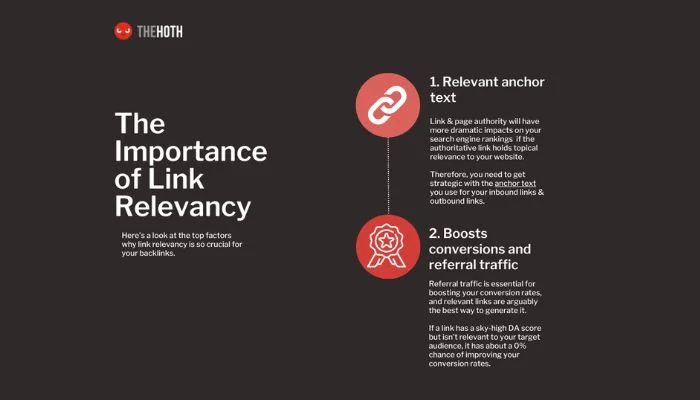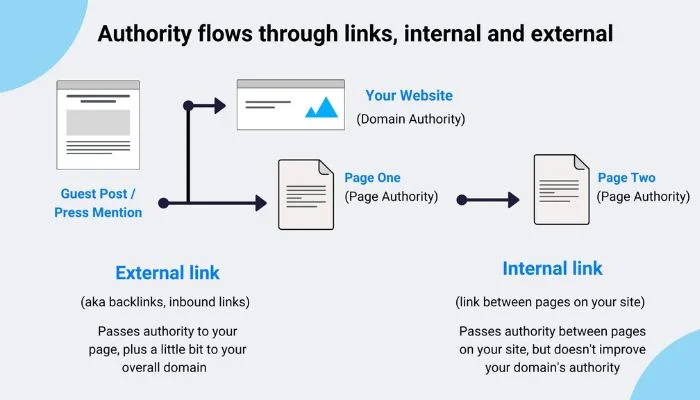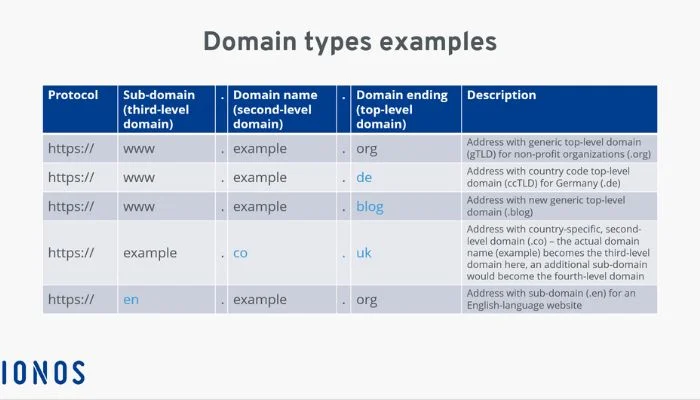5 Effective Methods to Evaluate Link Quality for Successful Link-Building

Using effective methods to evaluate link quality is essential for successful link-building. Link-building serves the purpose of leveraging external high-quality websites to push more qualified traffic sources back into your own website in return providing yourself with much-needed attention and a boost in rankings.
Therefore, it is critical that you have a means by which to assess the links you build from them so that they either help or don't hurt your chances with search engine optimization (SEO).
In this article, we will discuss the five ways by which one can conduct an assessment of their links before beginning any process in regards to organic link building strategies in order to generate effective results.
These methods include analyzing relevance; evaluating authority; monitoring diversity; assessing anchor text as well as examining placement.
Incorporating a link quality analysis into your link establishment strategy can help identify each link's quality indicator, which serves as a signal of link value.
A link quality indicator to ensure your efforts contribute positively to your SEO goals.
1. Analyzing Relevance

Assessing the relevance of the linking page to your website
Analyzing relevance is a key aspect of measuring the good quality of an SEO link building strategy, and it's particularly important when assessing the linking page from external sources.
Link relevance comes down to how closely linked the content and subject matters of your website are with that of the connecting source's page or website.
The domain name alone isn't enough—it must have related content that puts an emphasis on authority.
In addition, you will want to make sure there is natural overlap within respective topic hierarchies between your website and outside sources so readers see these associations as trending topics in your niche industry.
Keep this square relevancy checked off and in good order for higher chances at positive ranking results from external links!
Ensuring the content aligns with your niche or industry
When measuring quality links for successful link building tactics, it is important to analyze the relevance of the linking page to your website.
If possible, ensure the content on the page aligns with your niche or industry and supports its goals. This way, you can be sure that if someone clicks on a link from another website, they are more likely to end up with more relevant material or an appropriate resource for their own needs.
Additionally, target websites should compete in a similar market segment as yours and provide a direct benefit for users who access their few links by serving up sources related to your own subjects.
2. Evaluating Authority
Examining the domain authority of the linking website

Domain authority, defined as a website's search engine rankings and overall credibility on the web, is essential for building links since high-authority websites are considered credible by both humans and search engines alike.
Therefore, before establishing any links, a webmaster should examine how authoritative the potential linking website is online; this can be done using third-party tools or simply by discovering relevant facts about that site, such as its Alexa Rank or age in Google's index.
Conversely, linking to insider sources with weak domain authority will likely prove ineffective when attempting to build links that are strongly reliable.
Considering the website's overall credibility and trustworthiness
Considering the website's overall credibility and trustworthiness is a crucial factor in evaluating the link quality. Assessing this often looks at factors like how old the domain is, who owns it, its search rankings/visibility, if it has won any awards, and what type of content ideas it produces.
These elements can help determine if the linking source will be an effective route to your site from an SEO perspective. You should ensure that only proven websites should offer up links— those with good backlinking histories and established reputations within their industry.
3. Monitoring Link Diversity
Checking for a variety of link sources (e.g., different domains, IP addresses)

Particular attention should be paid to ensuring that there is a variety of link sources, not just from one domain or IP address. This ensures more credibility and trustworthiness overall by diversifying the backlink profile of your website.
By assessing both domains and IP addresses, you are provided with a wider range of unique backlinks, which enhance content authority when viewers click on the outbound links in particular areas.
Gathering high-quality backlinks from external high quality sites lends an additional dimension to any link structure and further enhances the user experience while search engines bots crawl through webpages as well.
Respective page rank scores are improved, too, as multiple websites send traffic to each searchable page, and content algorithms register this as a thumbs-up for the site.
Avoiding an over-reliance on a single source or network
Monitoring link diversity is an important step in evaluating link quality for successful link building efforts. It involves assessing the source of the links to ensure a website can rely on multiple assessments for its site.
This means avoiding zeroing in on just one domain and also researching IP addresses that host sites to be sure there isn't over-reliance from a single network or batch of websites.
Having diverse sources is an essential component of a quality link building process, because diversifying helps search engines evaluate the authenticity and quality of links, leading to better visibility for any given website or page.
Diversity is ideal, but if you're doing startup link building, diversity of links to your site can take a long time to acquire.
Start first by focusing on quality over quantity. Diversity will come in time.
4. Assessing Anchor Text

Analyzing the anchor text used in the link
One of the most important steps in evaluating link quality is assessing anchor text – which is the actual, clickable text used for a particular link. When analyzing anchor text, one should first examine it and ensure that it is natural. Are the words actually related to your website, brand, or page?
Second, strong relevance between phrases or keywords contained within the anchor text certainly needs to be established.
Finally, having diversity when it comes to linking phrases and keywords helps create authority within Google's eyes. Therefore overusing one association will do more harm than good to your end goal of obtaining high-quality links longer term.
Ensuring it is natural, relevant, and diverse
Using anchor text effectively is an important factor when it comes to measuring link quality. Anchor texts should be natural and relevant to the content of the linking page, not just placed indiscriminately without thought.
The process can be data-heavy too, so many use scripts to study quality Link Building patterns for each individual website or collection of websites related thematically.
Additionally, you'll want to ensure your anchor text remains diversified in order to emit a more natural spread on search engine results pages (SERPs).
Keeping front-end users in mind will be most beneficial here; err caution whenever throwing up irrelevant keywords simply as an SEO tactic because link relevance ultimately leads to reality and reinforces real authority onto SERPs anyway.
5. Examining Link Placement

Assessing the positioning of the link on the linking page
Where a link is placed on the linking page matters when it comes to effective link building strategies and should be closely examined. Links that are manually embedded into the main body of the content or blog post have been shown to carry more weight with search engine ranking algorithms than those just found in a footer or sidebar, for example.
Not only should links be manually added by webmasters but they should also logically fit within the context of their placement -It's important that great links render correctly within sentences and paragraphs as well as headings.
Additionally, keep an eye on where competitors' links land, as these placements can help gauge which type of linking location may be beneficial for your business in terms of search results visibility.
Avoiding links buried in low-visibility areas
When it comes to building links, avoiding links buried in low-visibility areas is essential for high quality link placement.
The "link juice" or SEO authority you may receive from acquiring a backlink on another website will be limited if the anchor text is positioned in an obscure area of the page unrelated to your niche or where few people are likely to click.
As such, all linking pages should be properly examined with respect to their layout and aesthetic presentation, paying close attention to where the referencing link appears on each page.
Properly positioning anchor texts within body copy gives them greater potential visibility when readers move through website articles and content.
In short, assessing the placement of links on a referring page helps ensure visitors have easy access while at the same time segregating websites with buried links that do not bring your desired link-building and SEO benefits.
Conclusion
The success of any link-building strategy relies heavily on link quality (and, by extension, content quality). It's important to analyze the relevance, authority, link diversity, anchor text, and placement of more backlinks you wish to acquire.
Through a combination of these metrics, you can get an accurate picture of how valuable your external links are to your website and further boost SEO efforts – all while still ensuring ethical practices.
Relevance ensures alignment with your industry or niche and helps avoid sacrificial or irrelevant links that may damage core SEO campaigns.
Authority measures the trustworthiness and credibility of domains hosting those hyperlinks while monitoring link diversity, which works to prevent an overwhelming reliance on one source repeating multiple times or from a single network. Analyzing anchor text completes this cycle, making sure these variants appear repeatedly and are natural yet precise.


.svg)

.jpg)
.jpg)
.jpg)